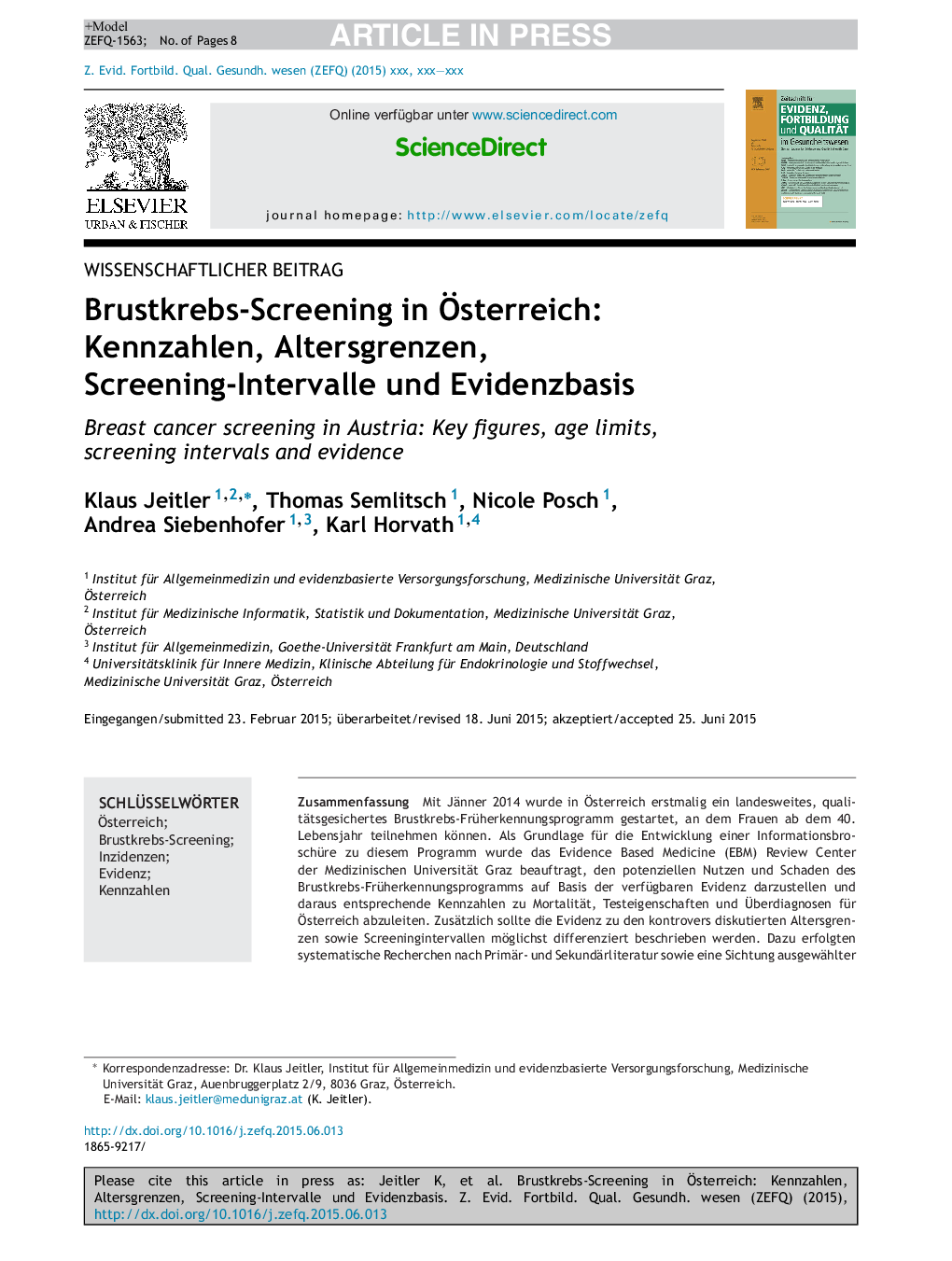| Article ID | Journal | Published Year | Pages | File Type |
|---|---|---|---|---|
| 7530187 | Zeitschrift für Evidenz, Fortbildung und Qualität im Gesundheitswesen | 2015 | 8 Pages |
Abstract
In January 2014, the first nationwide quality-assured breast cancer screening program addressing women aged â¥Â 40 years was introduced in Austria. As part of the process of developing a patient information leaflet, the Evidence Based Medicine (EBM) Review Center of the Medical University of Graz was charged with the task of assessing the potential benefits and harms of breast cancer screening from the available evidence. Based on these results, key figures were derived for mortality, false-positive and false-negative mammography results, and overdiagnosis, considering Austria-specific incidence rates for breast cancer and breast cancer mortality. Furthermore, the current evidence regarding age limits and screening interval, which were the subjects of controversial public discussions, was analyzed. A systematic search for primary and secondary literature was performed and additional evidence was screened, e. g., evaluation reports of European breast cancer screening programs. On the basis of the available evidence and of the Austrian breast cancer mortality and incidence rates, it can be assumed that - depending on the age group - 1 to 4 breast cancer deaths can be avoided per 1,000 women screened in a structured breast cancer screening program, while the overall mortality remains unchanged. On the other hand, 150 to 200 of these 1,000 women will be affected by false-positive results and 1 to 9 women by overdiagnosis due to the structured breast cancer screening. Therefore, the overall benefit-harm balance is uncertain. If women from 40 to 44 or above 70 years of age are considered, who can also participate in the Austrian screening program, even a negative benefit-harm balance seems possible. However, with the implementation of quality standards in breast cancer screening and the dissemination of a patient information leaflet, an improvement in the medical treatment situation, specifically in terms of informed decision-making, can be expected.
Related Topics
Health Sciences
Medicine and Dentistry
Public Health and Health Policy
Authors
Klaus Jeitler, Thomas Semlitsch, Nicole Posch, Andrea Siebenhofer, Karl Horvath,
